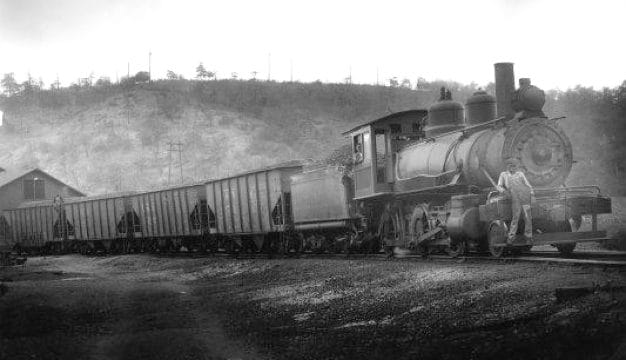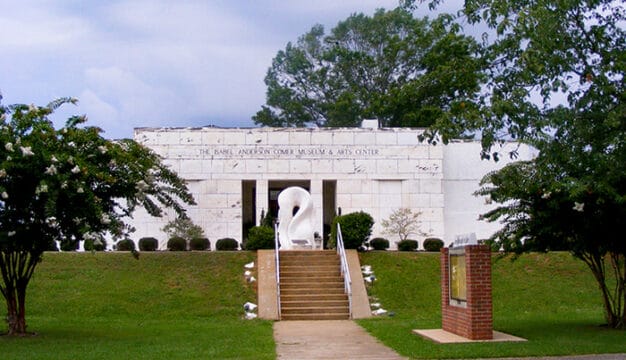Clayton
Located in the southeast part of the state, Clayton has been the county seat of Barbour County since 1834. Clayton has a mayor-council form of government.
History
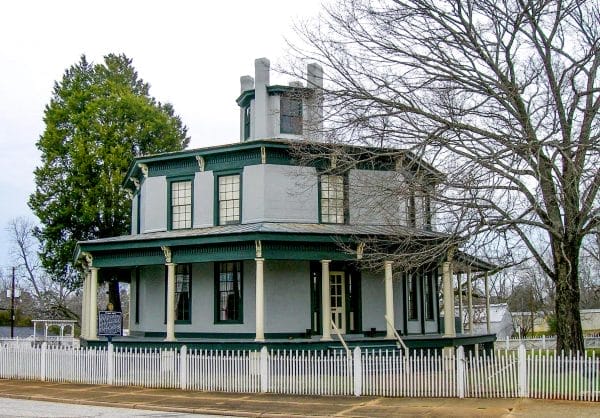 Octagon House in Clayton
Barbour County was created in 1832 from parts of Pike County, and Louisville was chosen as the county seat. One year later, an 11-member commission was formed to determine a new site for the county seat. After selecting a site in the geographic center of the county in 1834, county leaders christened the town Clayton in honor of Judge Augustine Smith Clayton, a U.S. representative from Athens, Georgia. The town was incorporated by act of the Alabama Legislature on December 21, 1841. The first courthouse was a log structure that was replaced with a brick neo-classical building in 1852. The current courthouse was built during the 1960s.
Octagon House in Clayton
Barbour County was created in 1832 from parts of Pike County, and Louisville was chosen as the county seat. One year later, an 11-member commission was formed to determine a new site for the county seat. After selecting a site in the geographic center of the county in 1834, county leaders christened the town Clayton in honor of Judge Augustine Smith Clayton, a U.S. representative from Athens, Georgia. The town was incorporated by act of the Alabama Legislature on December 21, 1841. The first courthouse was a log structure that was replaced with a brick neo-classical building in 1852. The current courthouse was built during the 1960s.
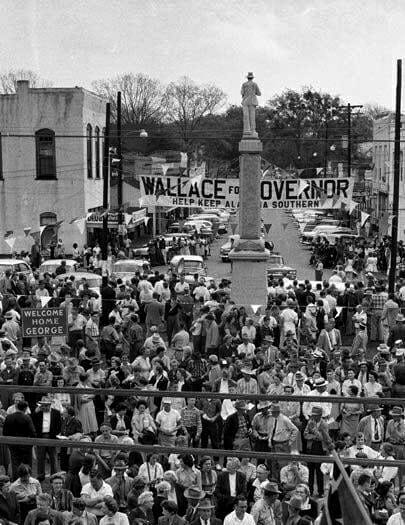 Wallace Campaign Rally in Clayton
During its early history, Clayton was home to several dry goods and mercantile stores, but it never surpassed the commercial importance of neighboring Eufaula. The town did receive a boost in 1883 when the Eufaula and Clayton Railroad was organized as part of the Central Railroad of Georgia, and by 1888, the line extended to Ozark, Dale County. Though largely untouched during the Civil War, the town was visited by a Union raiding party in April 1865 after the war had ended. The Union soldiers reportedly attempted to steal fresh horses, and several men in the town attempted to stop them. The skirmish ended with the deaths of one soldier and one townsperson, but no punishments were enacted because the soldiers had been acting against orders by engaging the townspeople.
Wallace Campaign Rally in Clayton
During its early history, Clayton was home to several dry goods and mercantile stores, but it never surpassed the commercial importance of neighboring Eufaula. The town did receive a boost in 1883 when the Eufaula and Clayton Railroad was organized as part of the Central Railroad of Georgia, and by 1888, the line extended to Ozark, Dale County. Though largely untouched during the Civil War, the town was visited by a Union raiding party in April 1865 after the war had ended. The Union soldiers reportedly attempted to steal fresh horses, and several men in the town attempted to stop them. The skirmish ended with the deaths of one soldier and one townsperson, but no punishments were enacted because the soldiers had been acting against orders by engaging the townspeople.
By the 1870s, the city of Eufaula had far outpaced Clayton in population growth and commercial importance, and several Eufaula citizens soon began lobbying to have the county seat removed to their city. In 1879, Clayton and Eufaula citizens instead compromised and agreed to build an additional courthouse in Eufaula. Under the arrangement, criminal and civil matters arising in the eastern half of the county were heard in Eufaula, while those in the western half were heard in Clayton. The unique arrangement still stands. The first telegraph line was run from Clayton to Eufaula in 1881, and the first telephone line was installed in 1895.
Demographics
According to 2020 Census estimates, Clayton’s population was 2,853. Of that number, 66.1 percent identified themselves as African American, 31.7 as white, 1.8 percent as two or more races, 1.6 percent as Hispanic, and 0.4 percent as American Indian. The city’s median household income was $24,083, and per capita income was $9,170.
Employment
According to 2020 Census estimates, the workforce in Clayton was divided among the following industrial categories:
- Manufacturing (28.2 percent)
- Public administration (17.6 percent)
- Retail trade (16.4 percent)
- Arts, entertainment, recreation, and accommodation and food services (12.3 percent)
- Educational services, and health care and social assistance (11.1 percent)
- Construction (4.2 percent)
- Transportation and warehousing and utilities (3.9 percent)
- Agriculture, forestry, fishing and hunting, and extractive (2.8 percent)
- Finance, insurance, and real estate, rental, and leasing (1.4 percent)
- Professional, scientific, management, and administrative and waste management services (1.4 percent)
- Other services, except public administration (0.7 percent)
Education
Clayton is located in the Barbour County public school district and has one elementary school and one high school.
Transportation
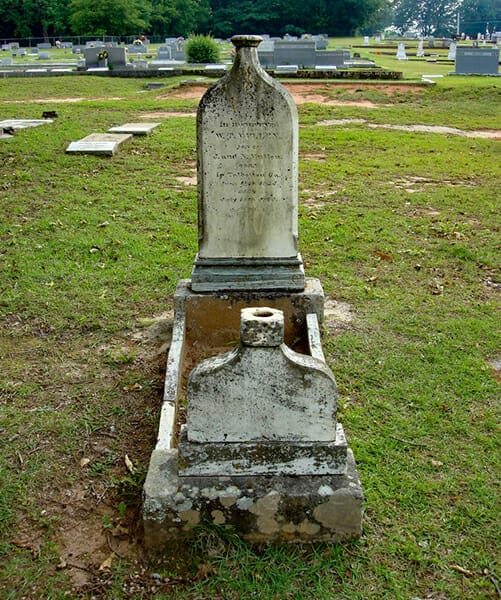 Whiskey Bottle Tombstone
Clayton was connected by rail to Eufaula and Ozark in the 1880s when the Central of Georgia was organized in the town. Clayton today is served by County Road 30.
Whiskey Bottle Tombstone
Clayton was connected by rail to Eufaula and Ozark in the 1880s when the Central of Georgia was organized in the town. Clayton today is served by County Road 30.
Events and Places of Interest
The Grace Episcopal Church, built in 1876, and the Miller-Martin Townhouse, built in 1859, are listed on the National Register of Historic Places. Clayton Town Cemetery includes the unique Whiskey Bottle Tombstone, which was once featured on Ripley’s Believe It or Not. The tombstone marks the grave of W. T. Mullen, an alcoholic whose wife made good on her threat to mark his grave with a whiskey bottle-shaped tombstone if he did not stop drinking.
Additional Resources
Dorman, Lewy. History of Barbour County, Alabama. Eufaula, Ala.: Barbour County Genealogy and Local History Society and Friends of the Library Genealogical Society, 2006.
Heritage of Barbour County. Clanton, Ala.: Heritage Publishing Company, 2001.
Walker, Anne Kendrick. Backtracking in Barbour County: A Narrative of the Last Alabama Frontier. Richmond, Va.: Dietz Press, 1941.

